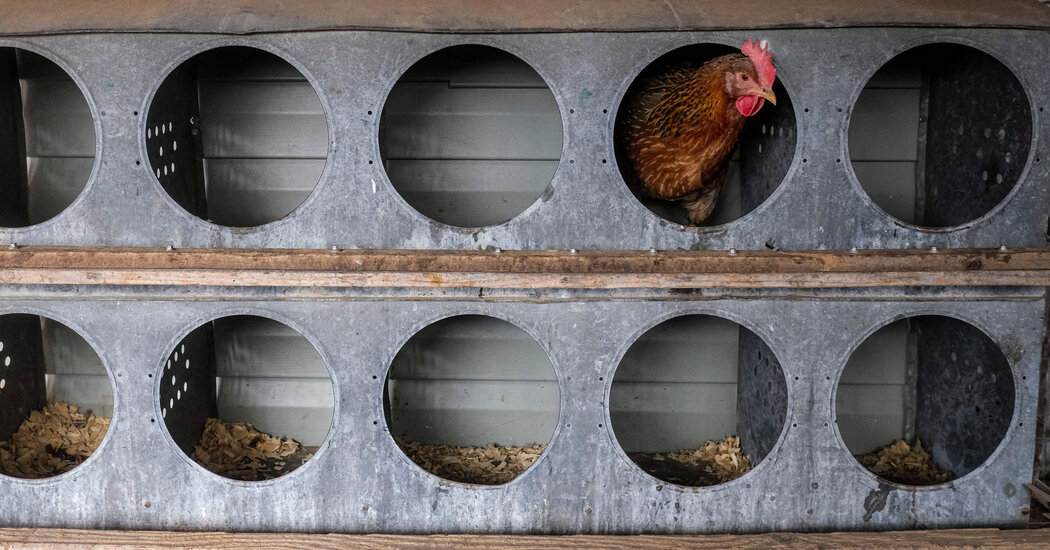People in New Orleans are used to preparing for hurricanes and floods. So when they learned of a new threat — an infusion of salty water creeping slowly up the Mississippi River, threatening municipal drinking water supplies — they did what comes naturally: strip bottled water from grocery store shelves.
But this is a crisis with even more lead time than a storm churning in the Gulf of Mexico: The worst of the saltwater intrusion isn’t expected to reach the city until late October. And the salty water could stick around for much longer, potentially corroding the city’s lead-lined pipes.
“It’s kind of a perfect storm,” said Jesse Keenan, a climate adaptation expert at Tulane University.
The crisis is a result of drought conditions in the Midwest, which have sapped water levels in the Mississippi, allowing salty water from the Gulf to creep upstream beneath a freshwater layer.
Officials with the U.S. Army Corps of Engineers say the “saltwater wedge,” which has already affected communities downstream, could reach water treatment plants near New Orleans in about a month, pushing the salty water into household faucets. About a million people across southeastern Louisiana could be affected.
Officials are working to slow the influx by strengthening an underwater sill, or levee, at the bottom of the Mississippi, and preparing to ship tens of millions of gallons of fresh water from upstream by barge to affected treatment facilities on a daily basis.
Still, managing the demand for clean water could take a herculean effort, Dr. Keenan said, especially because it is unclear how long the intrusion could last. City officials said this week that they were planning for as long as three months, based on expert advice.
In previous dry years, including in 1988 and 2012, officials in Louisiana managed to avert major problems, but this could be different: It’s the second straight year in which water levels have dropped drastically because of heat and drought intensified by climate change.
“What we’re looking at now is an order of magnitude more serious,” Dr. Keenan said.
Officials sounded the alarm last week, and Governor John Bel Edwards, a Democrat, requested federal assistance on Monday. President Biden approved a declaration authorizing the Federal Emergency Management Agency to help manage the crisis.
“The most important thing for residents at this time is to stay informed and remain calm,” Mayor LaToya Cantrell of New Orleans said in a statement.
At Zuppardo’s Family Market, a grocery store in Metairie, a suburb northwest of the city, water bottles were flying off the shelves late last week. For a couple of days, said Joseph Zuppardo, an owner, the store was selling 60 pallets daily, or about 2,000 water bottles.
“Then the people on the news started saying, ‘Well, look, we’re still a month away,’” Mr. Zuppardo said. Since then, demand has ebbed, he said — but the store is still selling about twice as much as normal.
Schools are ordering backup supplies, and hospitals are planning for a long-term crisis. “We may have to deal with this for several months,” said Dr. Katherine Baumgarten, the medical director for infection control and prevention at Ochsner Health, which operates dozens of hospitals and medical centers in Louisiana.
Some of those facilities have access to well water, and others can be supplied water from trucks. But some are being outfitted with reverse osmosis filtration machines; running them could cost more than half a million dollars a month, Dr. Baumgarten said.
The main tool for trying to halt the advance of saltwater is the sill that was installed in the river by the Army Corps in July. On Friday, officials said they would increase its height by 25 feet — while leaving a narrow channel for ships — but even that is expected to delay the wedge’s progression by only 10 to 15 days.
Unless the Mississippi basin receives significant rainfall soon, the sill will eventually be topped, said Col. Cullen Jones of the Army Corps.
At a meeting of the City Council’s public works committee on Wednesday, Collin Arnold, the director of emergency preparedness, said that barges and filters might not be enough to supply the region’s two biggest water treatment facilities with sufficient fresh water.
He called for the construction of a pipe that could pull even more fresh water from upriver. It would require federal assistance, and officials said the cost could exceed $250 million.
Salty drinking water is a health risk associated with hypertension, and pregnant women are especially vulnerable. Saltwater can also leach dangerous materials from old pipes, a serious concern in a city where many of the homes were built long before 1986, when lead piping was banned by Congress.
In an email, the Sewerage and Water Board of New Orleans said it would work with state and federal officials to track corrosion. “The impacts will depend on several factors, including the level of salinity and the length of time saltwater remains in the system,” the board said.
It added: “Any speculation about impacts is premature.”
Colbi Edmonds contributed reporting.











